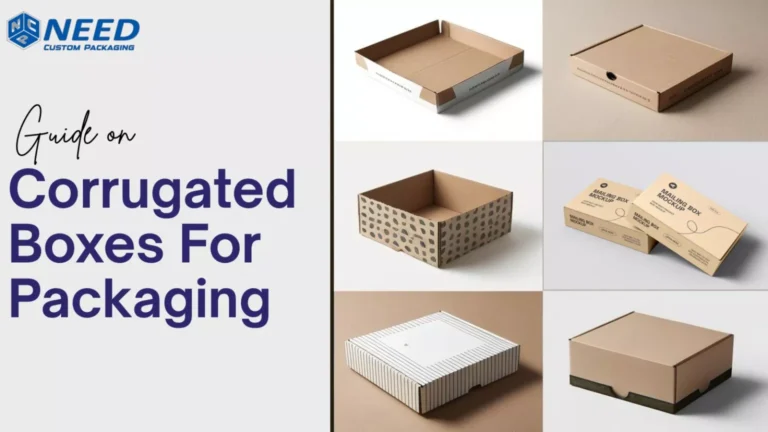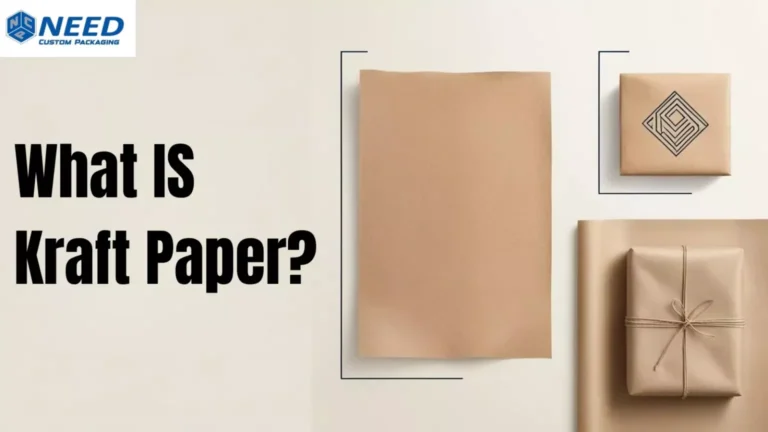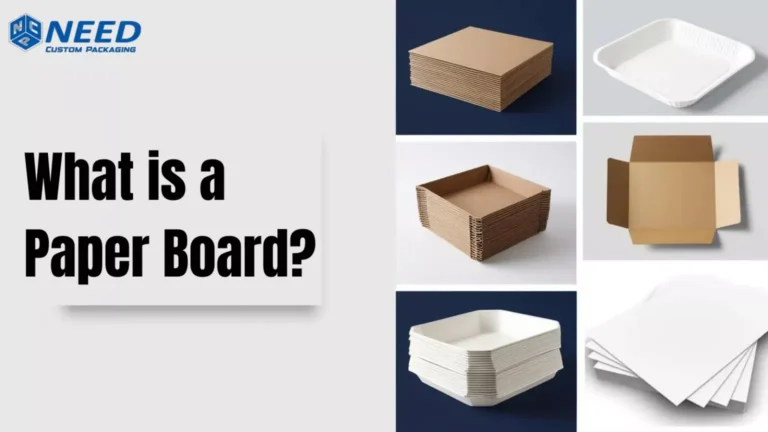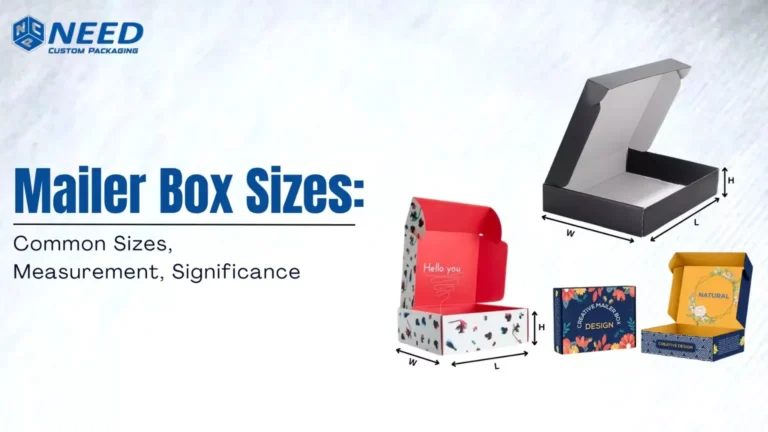Paperboard is a rigid, thick, and versatile material produced through the compression of pulp layers into a durable sheet. This durable material provides exceptional structural integrity to different products. It has become an integral part of packaging for different industries, such as beverage carriers, cosmetics, food, and pharmaceuticals.
What is Paperboard Made Of?
Paperboard is usually made through a pulping process using wood pulp, which is derived from softwood or hardwood. Chemical or mechanical techniques are utilized to break down the fibers of pulp and press into the sheets. The pulp commonly combines recyclable and virgin wood fibers to eliminate the environmental impact.
Recycled paper fibers maintain sustainability while fulfilling your requirements. It‘s important to consider that wood types can affect the product’s characteristics, such as color, texture, and strength. For instance, Kraft paperboard is made from the kraft process through the wood fibers for the preservation of their resilience and strength.
Irresistible Features of Paperboard
The best paperboard for packaging features phenomenal characteristics:
- Durability and Thickness: Thickness, commonly 200 g/m², ensures excellent durability and resistance against bending or tearing.
- Eco-Friendly: A sustainable material crafted from wood pulp is the perfect option for recyclable and biodegradable paperboard packaging.
- Versatility: the easy cutting, folding, and molding into idea dimensions makes it a perfect choice for products like greeting cards, food containers, and custom boxes.
- Printable Surface: Paperboard thickness makes the surface ideal for printing promotional materials and branded product packaging.
Differences Between Paperboard and Regular Paper
Paperboard vs. paper differences in terms of weight and thickness. A regular usually has a thickness of 80-100 g/m² while a paperboard has a thickness of more than 200 g/m². This thickness improves durability and strength, making it ideal for packaging, while regular paper is perfect for writing and printing.
It is important to note that a paperboard is less flexible than a regular paper, offering ideal resistance against the tear and wear. The rigid nature of paperboard maintains the shape for different products such as cartons and boxes.
Best Types of Paperboard for Packaging
| Paperboard Types | Appearance | Durability & Strength | Use Cases |
| Soid Bleached Sulfate (SBS) | White, smooth Surface | High durability and strength | Premium Packaging (food, cosmetics) |
| Coated Unbleached Kraft (CUK) | Natural brown, coated | High moisture resistance, durability | Industrial packaging, food containers, beverage cartons |
| Clay Coated Newsback (CCNB) | Smooth surface with uncoated back | Lightweight, moderate strength | General packaging, lightweight food packaging |
| Recycled Paperboard | Commonly brown or gray | Moderate to higher strength | Retail packaging, cereal boxes |
| Kraft Paperboard | Rough texture, natural brown | Tear resistance, high strength | Kraft bags, shipping boxes |
Paperboard History and Evolution
In 1817, the first-ever carton was created from a simple foldable paper to package dry goods. Folding cartons were introduced in the 1860s to ensure easy assembling, folding, and transportation. A mechanical die-cutting machine was invented in 1879 to create intricate designs while boosting efficiency and minimizing production time.
The establishment of the kraft sulfate mill in 1911 for kraft paperboard production on a larger scale led to durable and eco-friendly packaging solutions. Gable top milk carton was introduced in 1915 for liquid products such as milk. The development of ovenable paperboard in 1974 makes it ideal for cooking applications and frozen food packaging.
The use of sustainable resources and excellent printing methods have become possible today due to technological advancement. Rising environmental concerns during the 20th and 21st centuries have resulted in eco-friendly coatings and recycled paperboard.
How Paperboard is Manufactured: A Step-by-Step Guide
Paperboard is made for products like tissue boxes through the following manufacturing process:
- Pulping: Wood or recyclable pulp is processed through chemical pulping or mechanical pulping.
- Blending: The pulp is combined with different additives, including water, to ensure ideal characteristics and consistency.
- Pressing: The pulp is spread onto the mesh screen to drain and press into the sheet.
- Drying: High-quality paperboard production undergoes the drying process to remove moisture in the presence of heated rollers.
- Calendering: An important step in paperboard manufacturing process to pass the dried material through rollers to ensure the ideal finish and thickness.
- Coating and Finishing: Paperboard coating is done with materials like wax or clay to improve resistance, print quality, and durability.
Sustainable Alternatives to Traditional Paperboard
Paperboard is engineered from unbleached kraft, bleached fibers, recycled materials, and virgin wood fibers to reduce the carbon footprint and offer sustainable alternatives. The most popular alternatives of paperboard raw materials are mentioned below:
- Biodegradable Coatings: The ideal replacement of plastic-based coatings ensures the natural decomposition of paperboard.
- Recyclable Paperboard: Crafted from post-consumer waste, reducing the essence of virgin wood fibers.
- Tree-Free Paperboard: Made from alternative fibers such as agricultural waste, hemp, or bamboo, reducing dependency on traditional wood pulp.
The Role of the Kraft Process in Paperboard Production
It is a chemical method to produce high-strength paperboard, such as kraft paperboard, through die cutting and creasing. The Kraft process involves cooking wood pulp in a mixture of sodium sulfide and sodium hydroxide to break down the lignin to enhance the strength of fibers against tear and wear.
Why Paperboard is Preferred for Rigid Packaging
Folding boxboard (FBB) and white-lined chipboard (WLC) are familiar because they are rigid and strong and can maintain their shape under different circumferences. A paperboard is ideal for rigid packaging due to the protection of products during handling, storage, and transportation. High-quality paperboard production makes it ideal for different products such as corrugated packaging and product boxes.
Paperboard Coating Techniques for Enhanced Durability
Coated paperboard is a perfect option for different applications. Therefore, manufacturers consider ideal coating methods for diverse paperboard applications.
- Acrylic Coating: A non-toxic option that enhances durability and is perfect for food packaging.
- Clay Coating: Offers a glossy, smooth finish to improve appearance and printability.
- Polyethylene Coating: Provides moisture resistance, making it ideal for applications where water resistance is important.
- Wax Coating: Ensures ideal water resistance, particularly in applications such as cartons for frozen foods or liquids.
Buy Paperboard Packaging for Your Brand
Paperboard is created using a fourdrinier machine or cylinder machine to shape the packaging in the required dimensions. Exceptional features such as sustainability, printability, and durability make it an ideal choice for industries seeking sustainable and functional materials. The versatility of paperboard has a primary role in packaging and safeguarding products during storage and shipping.
With the increasing customer demand for sustainable alternatives to plastic, paperboard provides a promising option for a greener environment. Therefore, you can invest in durable and affordable paperboard packaging available at Need Custom Packaging for your products. Let’s take advantage of our free consultancy today to make a well-informed decision regarding product packaging!
FAQs
Is paperboard eco-friendly?
Answer: Yes, paperboard is an eco-friendly material for different applications.
What is the strongest type of paperboard?
Answer: Corrugated cardboard is the strongest type of paperboard material.
Can paperboard be recycled?
Answer: Yes, paperboard can be recycled to recover fibers easily.
What is the paper board used for?
Answer: Paperboard is primarily used for packaging applications such as boxes, containers, and cartons.
What is the raw material for the paper board?
Answer: Wood pulp is the raw material for paperboard.
Is paper board the same as cardboard?
Answer: No, paper board is not the same as cardboard.








